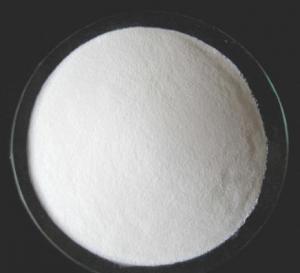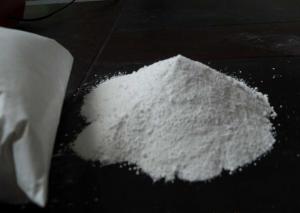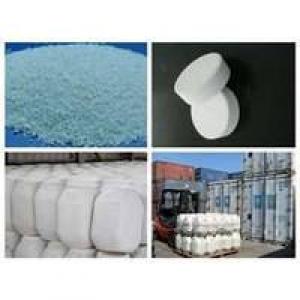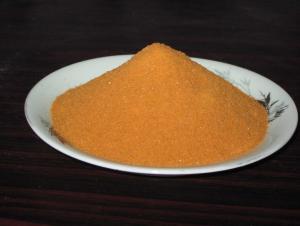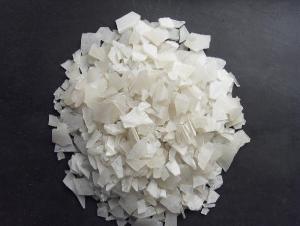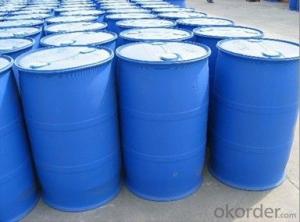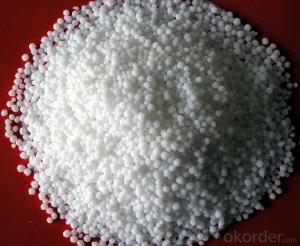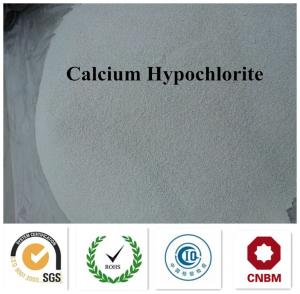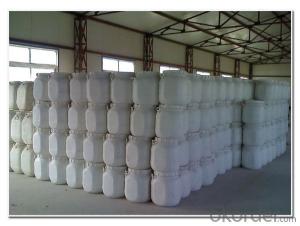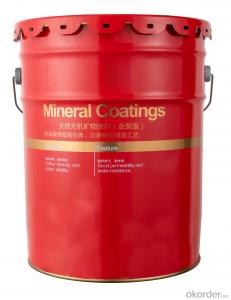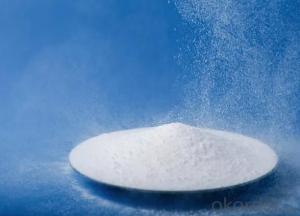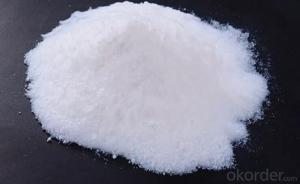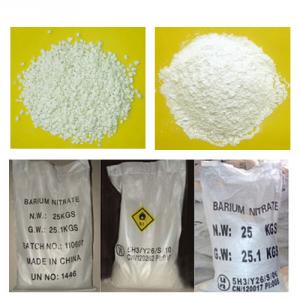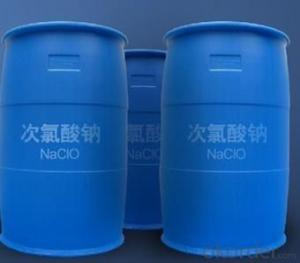Ammonium Chloride Inorganic Salt Construction Chemicals
- Loading Port:
- China main port
- Payment Terms:
- TT OR LC
- Min Order Qty:
- 1000 kg
- Supply Capability:
- 500000 kg/month
OKorder Service Pledge
OKorder Financial Service
You Might Also Like
Ammonium Chloride Inorganic Salt Construction Chemicals
Product Name: Ammonium Chloride
Molecular formula: NH4Cl
Molecular weight: 53.5
CAS NO.:12125-02-9
HS CODE: 28271090
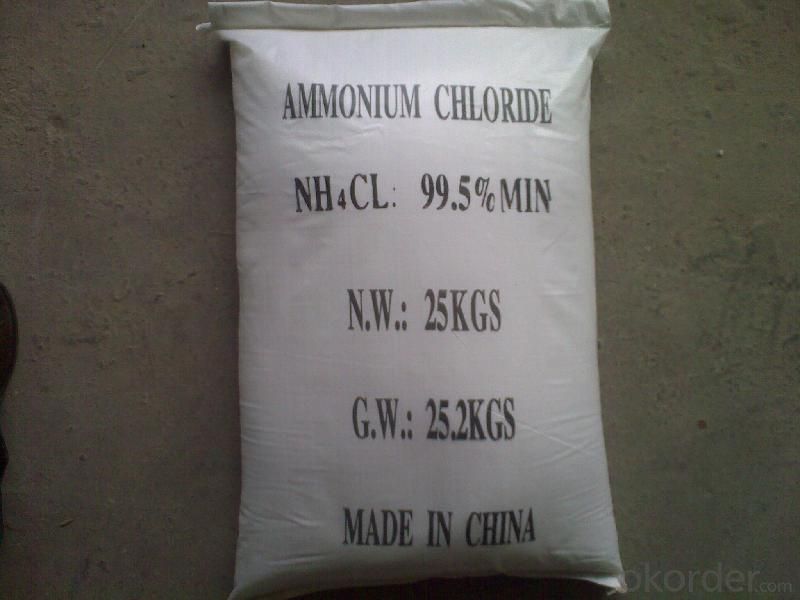
Properties and applications:
It is colorless Cubic crystal or powder,salt and cool taste.It cancorrode the
black metal and other metals.
USE:
1.Dry cell. used as electrolyte in zinc-carbon batteries.
2.Metalwork.as a flux in preparing metals to be tin coated, galvanized or soldered.
3.Other applications. Used to work on oil wells with clay swelling problems.Other uses
include in hair shampoo,in the glue that bonds plywood, and in cleaning products. In hair shampoo, it is used as a thickening agent in ammonium based surfactant systems, such as ammonium
lauryl sulfate. Ammonium chlorideis used in the textile and leather industry in dyeing,
tanning,textile printing and to luster cotton.
Agricultural Ammonium Chloride(NH4CL): GB2946-92
| Inspection ltem | Unit | Dry Ammonium Chloride | Wet Ammonium Chloride |
| Nitrogen | %>= | 25.4 | 23.5 |
| Moisture | %<=< span=""> | 1.0 | 7.0 |
Industrial Ammonium Chloride(NH4CL): GB2946-92
| Inspection ltem | Unit | Fine Grade | Feed Grade | First Grade | Qualified Grade |
| Assay | %>= | 99.5 | 99.5 | 99.3 | 99 |
| Moisture | %<=< span=""> | 0.7 | 0.5 | 1.0 | 1.0 |
| Iron | %<=< span=""> | 0.001 | 0.001 | 0.001 | 0.003 |
| Buring residue | %<=< span=""> | 0.4 | 0.4 | 0.4 | 0.4 |
| Heavy metal (as Pb) | %<=< span=""> | 0.0005 | 0.0005 | 0.0005 | 0.001 |
| As | %<=< span=""> | 0.0005 | |||
| Sulphates(as SO4) | %<=< span=""> | 0.02 | 0.02 | 0.02 | - |
| PH(200g/L solution,temperature 25°C)4.0-5.8 | |||||
Packing: In 25/50kg net PP/PE bag or the demanding of customer
FAQ
1.Q: What is MOQ?
A: Our MOQ is 1 TON.
2.Q: Could you offer free sample?
A: We can provide free samples to you for quality testing.
3.Q: What about your packing?
A: For liquid: Flexitank, or IBC tank 1000L
For powder:Woven fabric bag with plastic film liner( 25kg or 1000kg)
Clients’ packing is workable.
4.Q: How about your productive capacity?
A: 150000 tons/Year.
5.Q: What is your delivery time?
A: Within 7 days after received deposit or L/C at sight.
- Q:What is the difference between "organic salt" and "inorganic salt"? What is the difference between "organic salt" and "inorganic salt"?
- The biggest difference between inorganic salts and organic salts is the difference in their composition. And a large part of their chemical properties are determined by acid. For example, inorganic salts generally have a strong hydrophilic, and organic salts with some non-polar reagents have affinity.
- Q:What is the most important inorganic salt in plant growth?
- The inorganic salts required by plants are nitrogen, phosphorus and potassium containing inorganic salts, and if any lack of plants will affect the normal growth of plants, nitrogen is a component of many important organic compounds in the body, such as protein, nucleic acid, chlorophyll , Enzymes, vitamins, alkaloids and some hormones contain nitrogen. Nitrogen is also the basis of genetic material in all organisms, the most important protein, it is often in the center of metabolic activity.Now is to limit the growth of plants and the formation of the primary Factor. It also has a significant effect on improving the quality of the product.K2 is dissolved in the plant juice, and its main function is related to the metabolism of the plant.The content of phosphorus in the plant is second only to nitrogen and potassium, Phosphorus plays an important role in plant nutrition. Almost all important organic compounds in plants contain phosphorus. Phosphorus is involved in photosynthesis, respiration, energy storage and delivery, cell division, cell enlargement and other processes in plants.
- Q:A. food gathering and digestion B. photosynthesis and diatom structures C. reproduction and osmosis D. wave and current motions
- its not a so try b or c those 2 are the most likely to be the right answers
- Q:Sodiumcorbonate is inorganic salt , why it is not organic substance even it contains carbon?
- Organic molecules have carbon to carbon bonds. EDIT: I wonder why I got a thumb down for stating the definition of an organic molecule? Yahoo answers is a weird place. If there's only one carbon atom in a molecule its not an organic molecule, because there can be no C-C bonds...
- Q:An inorganic salt is dissolved in water and yields a solution that has a color. Make a statement about the type of element the substance contains that casuses the color.Thanks!
- Many inorganic salts form colored solutions . pper ( II) sulfate ( Blue ) nickel (II) acetate = green, mangaanse ( II) chloride = pink, iron(III) chloride = yellow, potassium dichromate, orange and so many more Can you be more specific ?
- Q:Inorganic salt function
- The various inorganic salts dissolved in the cells have a certain total concentration, such as human body fluid concentration of 0.9%, frogs of 0.65%, which for maintaining cell osmotic pressure, so that cells maintain a certain shape has an important role, too high or Too low will lead to cell due to water or dehydration to change the cell morphology. There are also a number of buffering systems in the body, which are a group which has a neutralizing effect on the added acid or base so that the pH does not change significantly and therefore plays an important role in maintaining the acid-base balance of the cells.
- Q:Are fruits and vegetables inactive?
- Inorganic salts are inorganic compounds in the salt, formerly known as minerals, the body has found more than 20 species, including constant elements of iron, zinc, selenium, molybdenum, chromium, cobalt, iodine 8. Apple, pipa, durian, citrus, Watermelon, kumquat, peanuts, I know so much. Oh, there are: lotus lotus which contain inorganic salts
- Q:Is calcium carbide inactive?
- Calcium carbide, the chemical formula for the CaC2, not inorganic salts. Salt refers to the metal ions and acid ions of the compound, calcium carbide does not have the corresponding acid.
- Q:what percent of dissolved salts found in seawater are minor inorganic salts, or trace?
- Seawater varies in composition a little but generally is about 3.5% salts. Of this about 3.1% is sodium chloride. So the remaining 0.4% is the other salts (Magnesium, Calcium and Potassium mostly, followed by just about every natural element in the periodic table in trace amounts)
- Q:People do not eat salt tears with no inorganic salt
- Your body depends on sodium ions for a variety of regulation, including the transmission of nerve signals, etc., before you tears do not contain salt before you have a dog
1. Manufacturer Overview |
|
|---|---|
| Location | |
| Year Established | |
| Annual Output Value | |
| Main Markets | |
| Company Certifications | |
2. Manufacturer Certificates |
|
|---|---|
| a) Certification Name | |
| Range | |
| Reference | |
| Validity Period | |
3. Manufacturer Capability |
|
|---|---|
| a)Trade Capacity | |
| Nearest Port | |
| Export Percentage | |
| No.of Employees in Trade Department | |
| Language Spoken: | |
| b)Factory Information | |
| Factory Size: | |
| No. of Production Lines | |
| Contract Manufacturing | |
| Product Price Range | |
Send your message to us
Ammonium Chloride Inorganic Salt Construction Chemicals
- Loading Port:
- China main port
- Payment Terms:
- TT OR LC
- Min Order Qty:
- 1000 kg
- Supply Capability:
- 500000 kg/month
OKorder Service Pledge
OKorder Financial Service
Similar products
New products
Hot products
Related keywords




